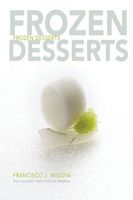🔥 Try our grilling cookbooks and save 25% on ckbk membership with code BBQ25 🔥
Varieties and Definitions: Gelato
Published 2008
The USDA has no standards for gelato. Anyone can make an ice cream and call it gelato. Opinions as to what makes a gelato unique will differ. If you ask an Italian pastry chef what gelato means, he will simply reply “ice cream.” If you ask a pastry chef in the United States what it means, you will have many different opinions. Some will say that gelato should contain no heavy cream or egg yolks, some will say it should, and they would both be right. In Italy, they make gelato with milk alone; milk and heavy cream; and milk, heavy cream, and eggs. Despite the different opinions, there is one quality that makes it unique and different from ice cream and custard-base ice cream, and that is its “overrun” (see definition). While most ice creams and custard-base ice creams have an overrun between 40 and 60 percent, the overrun for gelato is 20 percent, which makes it a denser, more compact product. If you incorporate any more air, it becomes ice cream or custard-base ice cream. Some argue that gelato has significantly less fat. There is little to no truth to that assertion and even if that were true, a spoonful of gelato with 20 percent overrun would have significantly more or the same fat as an ice cream with 45 percent overrun, since there is more product in the spoonful of gelato than there is in the spoonful of ice cream. If there is less air by volume it means that there is more product by volume and therefore more fat. The production of gelato is the same; it is the churning time that varies. With gelato it is shorter and therefore the finished product will have less air incorporated. The flavor is the same but the texture is vastly different.
Part of
Advertisement
Related Recipes
-
-
-
-
Related Reference
-
-
-
-
Advertisement



